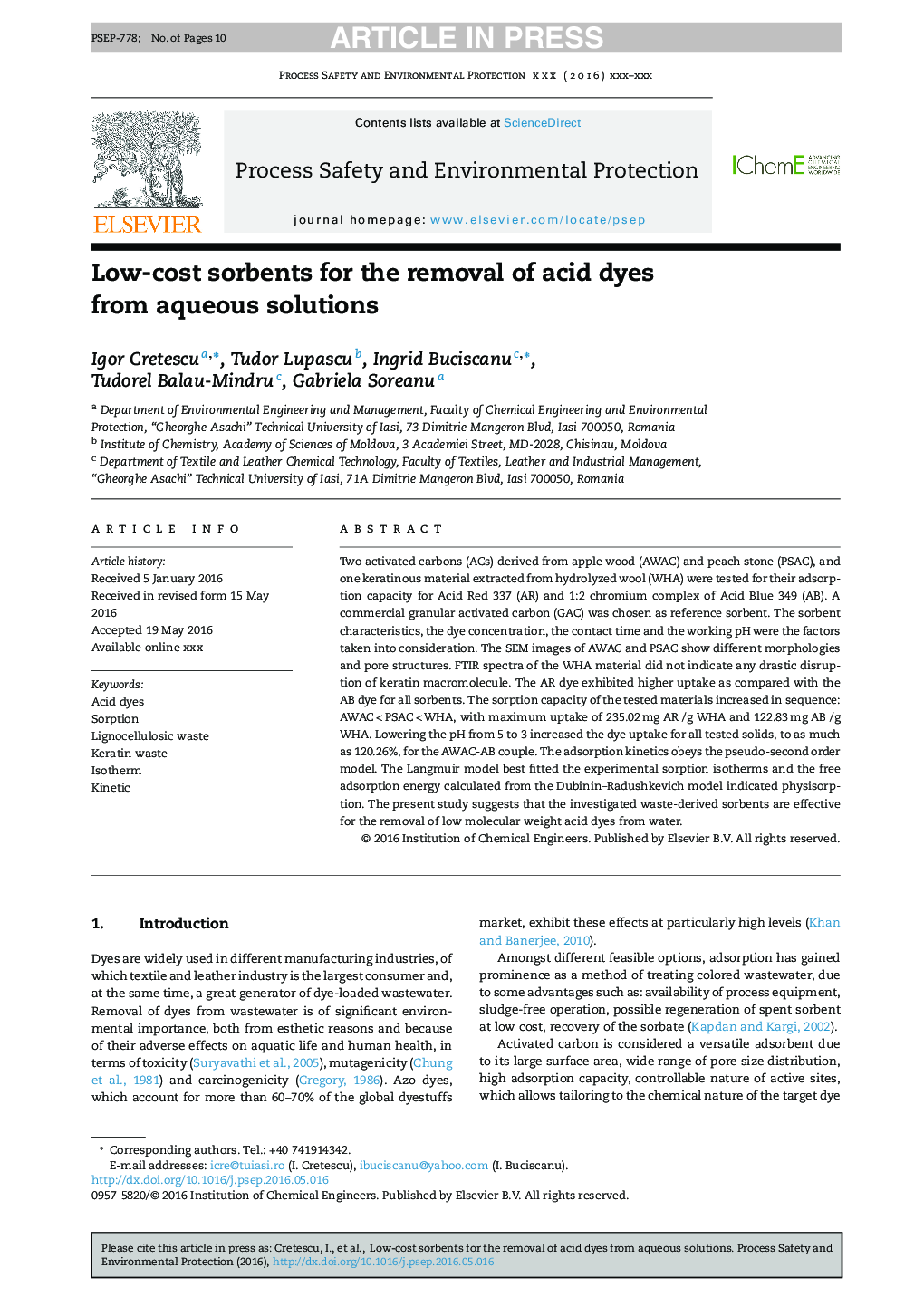| Article ID | Journal | Published Year | Pages | File Type |
|---|---|---|---|---|
| 4980735 | Process Safety and Environmental Protection | 2017 | 10 Pages |
Abstract
Two activated carbons (ACs) derived from apple wood (AWAC) and peach stone (PSAC), and one keratinous material extracted from hydrolyzed wool (WHA) were tested for their adsorption capacity for Acid Red 337 (AR) and 1:2 chromium complex of Acid Blue 349 (AB). A commercial granular activated carbon (GAC) was chosen as reference sorbent. The sorbent characteristics, the dye concentration, the contact time and the working pH were the factors taken into consideration. The SEM images of AWAC and PSAC show different morphologies and pore structures. FTIR spectra of the WHA material did not indicate any drastic disruption of keratin macromolecule. The AR dye exhibited higher uptake as compared with the AB dye for all sorbents. The sorption capacity of the tested materials increased in sequence: AWACÂ <Â PSACÂ <Â WHA, with maximum uptake of 235.02Â mg AR /g WHA and 122.83Â mg AB /g WHA. Lowering the pH from 5 to 3 increased the dye uptake for all tested solids, to as much as 120.26%, for the AWAC-AB couple. The adsorption kinetics obeys the pseudo-second order model. The Langmuir model best fitted the experimental sorption isotherms and the free adsorption energy calculated from the Dubinin-Radushkevich model indicated physisorption. The present study suggests that the investigated waste-derived sorbents are effective for the removal of low molecular weight acid dyes from water.
Related Topics
Physical Sciences and Engineering
Chemical Engineering
Chemical Health and Safety
Authors
Igor Cretescu, Tudor Lupascu, Ingrid Buciscanu, Tudorel Balau-Mindru, Gabriela Soreanu,
